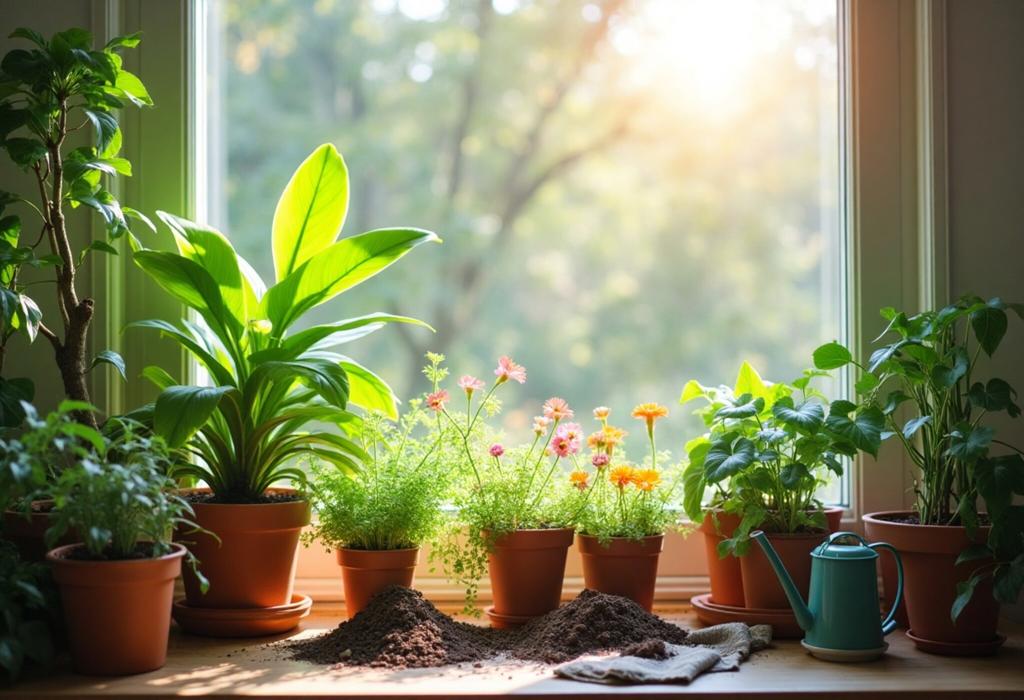For more details on this content, please review the step-by-step guide and frequently asked questions.
How to Care for Houseplants Successfully

Step-by-Step Guide
Understand the Basics of Houseplant Care
Houseplants provide numerous benefits including improved air quality and stress relief. It's essential to learn the basic needs of your plants such as light, water, soil, and temperature. Each plant species has specific requirements, so getting to know your houseplants is important.
Choose the Right Houseplants
Selecting houseplants that fit your lifestyle is crucial. If you're a beginner, consider easy-to-care-for plants like pothos, snake plants, or ZZ plants. Check the light levels in your home and select plants accordingly. Remember that some plants need more light while others can thrive in low-light conditions.
Provide Adequate Light
Plants require light for photosynthesis. Identify the natural light conditions in your space—whether it's low, medium, or bright light. Adjust placement accordingly. If natural light is insufficient, consider using grow lights to supplement.
Water Your Plants Correctly
Overwatering is a common mistake. It’s important to know the specific watering needs of your plants. Check the soil moisture by inserting your finger about an inch into the soil. If it's dry at that depth, it’s time to water. Use tepid water to prevent shock.
Select the Right Soil
Using the right potting mix is vital for plant health. Most houseplants do well in a well-draining potting soil. Research if your plant needs a specific type of soil. For example, cacti and succulents prefer sandy soil, while tropical plants thrive in moisture-retaining soil.
Choose Appropriate Containers
Containers should have drainage holes to prevent root rot. When selecting a pot, make sure it’s the right size for your plant. A pot that is too large can hold excess water, while a pot that is too small can restrict growth.
Maintain Proper Humidity Levels
Many houseplants thrive in humid environments. If your home is dry, especially in winter, consider misting your plants or using a humidifier. Grouping plants together can also create a microenvironment with higher humidity.
Fertilize Regularly
Use a balanced, water-soluble fertilizer to nourish your plants during their growing season, typically spring and summer. Follow the instructions on the fertilizer packaging and avoid over-fertilizing, which can harm your plants.
Prune and Trim Your Plants
Regular pruning helps maintain the shape and health of your plants. Remove dead or yellowing leaves to promote growth and prevent disease. Use clean, sharp scissors to prevent injury to the plant.
Watch for Pests and Diseases
Regularly inspect your plants for signs of pests or diseases, such as discoloration, sticky residue, or visible bugs. Treat infestations immediately with insecticidal soap or neem oil. Quarantine new plants to prevent spreading pests or diseases.
Rotate Your Plants
To ensure even growth, regularly rotate your plants so that all sides receive equal light exposure. This helps maintain a balanced shape and prevents lean, lopsided growth.
Repot When Necessary
As plants grow, they may outgrow their pots, becoming root-bound. Check for roots growing out of the drainage holes or circling the pot. If necessary, repot into a slightly larger container with fresh potting soil.
Create a Care Schedule
Maintaining a care schedule can help you not forget crucial tasks like watering, fertilizing, and repotting. Use a calendar or app to set reminders tailored to the specific needs of your plants.
Enjoy the Process
Houseplant care is a rewarding hobby. Take the time to enjoy the process of nurturing your plants. Observe their growth and health, and learn what methods work best for you.








